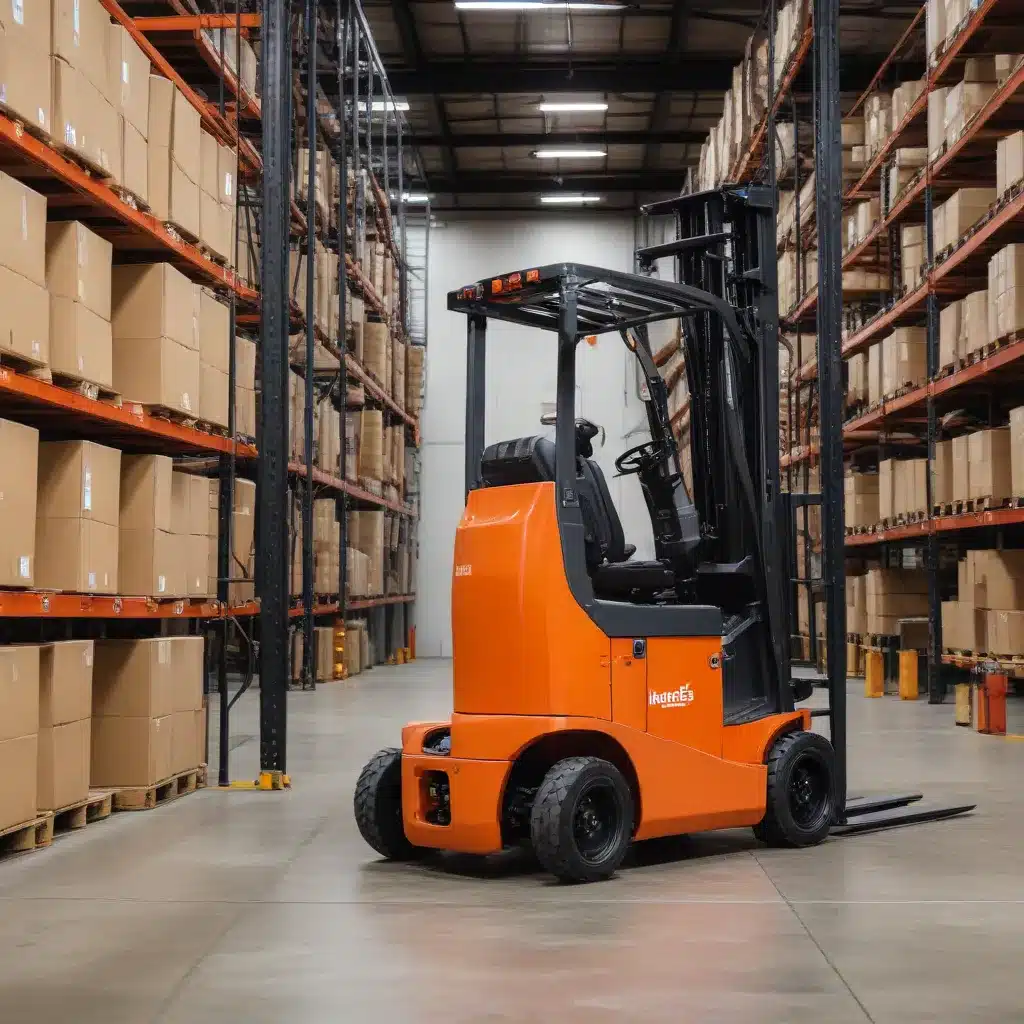
The Changing Landscape of Warehouse Logistics
In the fast-paced world of warehouse operations, industry leaders are constantly seeking ways to enhance efficiency, productivity, and sustainability. As the demands on logistics and supply chains continue to evolve, the need for innovative solutions has become increasingly evident. One key area that has emerged as a game-changer is the transition towards electric forklift technology, which promises to unlock a new era of operational agility and environmental responsibility.
Embracing the Power of Electrification
The warehousing and logistics industry has long relied on traditional internal combustion engine (ICE) forklifts to power its daily operations. However, the landscape is shifting as electric forklifts gain traction, offering a host of benefits that are transforming the way businesses approach materials handling.
“Electrification is the future of warehouse logistics,” states an industry expert from Prologis, a global leader in logistics real estate. “By transitioning to electric forklifts, companies can unlock greater operational flexibility, reduce their carbon footprint, and enhance the overall efficiency of their warehousing and distribution processes.”
The Advantages of Electric Forklifts
Increased Efficiency and Productivity
One of the primary advantages of electric forklifts is their ability to enhance operational efficiency. These advanced machines are designed to provide superior performance, with faster acceleration, higher top speeds, and increased lifting capacities compared to their ICE counterparts. This translates into faster material handling, improved workflow, and reduced cycle times, ultimately boosting overall productivity.
Furthermore, the seamless integration of electric forklifts with smart warehouse technologies, such as autonomous guided vehicles (AGVs) and warehouse management systems, enables a new level of synchronization and automation. This level of integration allows for real-time data monitoring, route optimization, and intelligent decision-making, further driving productivity gains.
Reduced Operating Costs
The transition to electric forklifts can also deliver significant cost savings for warehouse operators. These vehicles are inherently more energy-efficient, with lower fuel and maintenance expenses compared to traditional ICE forklifts. Additionally, the elimination of engine oil changes, air filters, and other routine maintenance tasks associated with internal combustion engines can result in substantial cost reductions over the lifespan of the equipment.
Enhanced Environmental Sustainability
As sustainability becomes a key priority across industries, the adoption of electric forklifts aligns perfectly with the growing demand for eco-friendly warehousing and logistics solutions. With zero direct emissions, electric forklifts contribute to the reduction of a warehouse’s carbon footprint, helping organizations meet their sustainability goals and comply with increasingly stringent environmental regulations.
Moreover, the integration of renewable energy sources, such as solar power, can further enhance the environmental benefits of electric forklifts, transforming warehouses into truly self-sustaining and carbon-neutral facilities.
Improved Operator Experience
Beyond the operational and environmental benefits, electric forklifts also offer a more comfortable and enjoyable work environment for operators. These machines generate significantly less noise and vibration compared to their ICE counterparts, reducing operator fatigue and enhancing overall job satisfaction.
Additionally, the intuitive controls and advanced safety features of modern electric forklifts, such as regenerative braking and collision avoidance systems, contribute to a safer and more ergonomic working environment, ultimately improving employee well-being and productivity.
Navigating the Transition to Electric Forklifts
While the advantages of electric forklifts are clear, the transition process can present unique challenges that warehouse operators must address. Successful implementation requires a strategic and well-planned approach, considering factors such as infrastructure upgrades, operator training, and integration with existing warehouse management systems.
Investing in Charging Infrastructure
One of the key considerations in the transition to electric forklifts is the development of a robust charging infrastructure within the warehouse. This includes the installation of dedicated charging stations, power management systems, and potentially even on-site renewable energy generation to support the increased energy demands.
“Prologis helps our customers navigate the transition to electric vehicles by providing turnkey solutions for charging infrastructure, regardless of whether they are located in our facilities or not,” explains the Prologis industry expert. “Our goal is to make the process as seamless as possible, enabling our customers to focus on their core business operations.”
Training and Change Management
Alongside the physical infrastructure changes, warehouse operators must also prioritize the training and adaptation of their workforce to the new electric forklift technology. Comprehensive training programs that cover both the technical operation and safety aspects of the equipment are crucial to ensure a smooth transition and seamless integration into daily workflows.
“At Yale, we work closely with our customers to provide tailored training solutions that empower their workforce to maximize the potential of our electric forklift technology,” says a spokesperson from the leading materials handling equipment manufacturer. “Our goal is to support our customers every step of the way, from product selection to ongoing maintenance and operator education.”
Integrating with Warehouse Management Systems
To fully unlock the benefits of electric forklifts, warehouse operators must also consider the integration of these vehicles with their existing warehouse management systems (WMS) and other smart technologies. By leveraging real-time data and seamless communication between forklifts and the broader warehouse ecosystem, businesses can optimize workflows, enhance inventory tracking, and drive continuous improvements in operational efficiency.
The Future of Warehouse Electrification
As the warehousing and logistics industry continues to evolve, the adoption of electric forklifts is poised to play a pivotal role in shaping the future of materials handling. With the advantages of increased efficiency, reduced costs, and enhanced sustainability, the transition to electric power presents a unique opportunity for warehouse operators to future-proof their operations and stay ahead of the curve.
“The warehouse of the future will be defined by its agility, responsiveness, and environmental stewardship,” concludes the Prologis industry expert. “By embracing electric forklift technology, businesses can unlock a new era of operational excellence and position themselves for long-term success in the ever-changing landscape of logistics.”
To learn more about the latest advancements in electric forklift technology and how your organization can benefit from this transformative shift, explore the Forklift Reviews website. Our team of industry experts is dedicated to providing valuable insights and practical guidance to help you navigate the evolving world of warehouse electrification.

